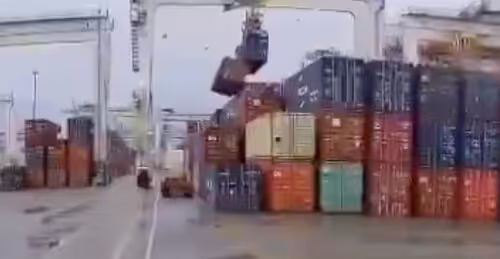A recent “close call” at Vancouver’s bustling shipping container port has sparked renewed conversations about safety protocols and risk management in high-traffic port environments.
The incident, which occurred at one of Canada’s largest and busiest ports, narrowly avoided turning into a serious accident, thanks to the quick response of on-site staff. As Vancouver’s port handles massive volumes of containers daily, incidents like these underscore the importance of rigorous safety measures to protect workers and cargo.
Incident Highlights Need for Increased Safety Measures
Although no one was injured, the close call at the Vancouver port has raised concerns among industry professionals and the port authority alike. Ports across Canada have been striving to improve safety standards, given the sheer size and density of their operations. With enormous cranes, heavy containers, and large vessels operating in close proximity, even a minor oversight can have severe consequences.
A representative from Vancouver’s port authority explained, “We are always reviewing and updating our safety protocols to ensure incidents like these are prevented. The safety of our workers and the security of the goods passing through our facilities is our top priority.”
Adapting Technology for Safer Operations
In light of this recent event, there has been a push to invest in more advanced technology at the port. Automated systems and real-time monitoring can enhance safety by providing early warnings about potential hazards, such as equipment malfunctions or misplaced containers. Ports worldwide are increasingly adopting such solutions to improve efficiency and reduce human error, and Vancouver’s port is no exception. Plans to introduce additional sensor-based technologies and automated tracking systems are underway, which could greatly minimise the risk of accidents.
Ongoing Training and Safety Drills for Port Workers
To reinforce safety, Vancouver’s port authority has placed a strong emphasis on staff training. Regular safety drills, updated training sessions, and clear protocols play a crucial role in preparing workers to handle emergencies swiftly and effectively. By building a safety-first culture, the port aims to empower its employees to react quickly to potential risks, preventing minor incidents from escalating.
“This incident reminds us of the critical importance of stringent safety protocols and ongoing staff training in high-density port environments. The safety of our workers and the security of our cargo is paramount,” said a spokesperson for Vancouver’s port authority.
The close call at Vancouver’s shipping container port serves as a wake-up call for ports everywhere. As global trade increases, so does the need for strict safety protocols, cutting-edge technology, and consistent training for port workers. The incident highlights the ongoing importance of vigilance, proactive safety management, and the role of technology in protecting both people and goods in high-stakes shipping environments.









